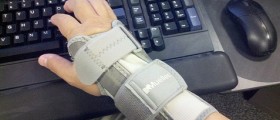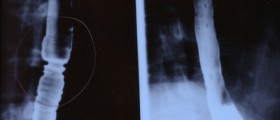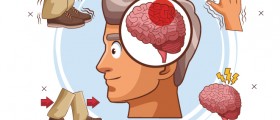
Dystonia is a condition in which various muscles in the body are affected by involuntary contractions. The symptoms of dystonia can be mild and tolerable, or severe and greatly affecting normal daily activities.There are five general types of dystonia: generalized, focal, segmental, multifocal and hemidystonia.
In generalized dystonia, which usually starts at young age, the contractions affect the entire body. Focal dystonia affects certain parts of the body on a localized area and multifocal distonia affects more than one part of the body that is not connected to each other. Segmental dystonia, on the other hand, affects parts of the body that are connected to each other. In hemidystonia, the half of the entire body is affected by dystonia symptoms.
Dystonia symptoms affecting different parts
Dystonia can affect one or more parts of the body. If it affects the eyes, the main symptom is blepharospasm, which looks like very intense and rapid blinking. The eyes may also become easily irritated and sensitive to light.
In dystonia that affects hands, the person suffering from it is not able to play an instrument, write in a tidy handwriting or perform activities that involve hand precision. This type of focal dystonia is often called writer’s cramp.
Voice box dystonia affects the larynx, causing the voice to sound quiet, airy or strangled. Cervical dystonia affects the neck, which twists and trunks the head to one side in a way that can be very painful.
Oromandibular dystonia involves the law and causes slurred speech and difficulty swallowing.
Generalized dystonia symptoms
Generalized dystonia may involve the entire body. Sometimes the contractions and spasms pay resemble epilepsy, except that the patient remains conscious. This form of dystonia is called paroxysmal dystonia. In this case the symptoms come and go in bouts, between which the patient feels normal.
Other symptoms of generalized dystonia include jerking of different body parts, abnormal posture of the trunk and the limbs, muscle spasms and limbs that feel like turning inwards.
Causes of dystonia
It is not yet clear what exactly causes dystonia, but it is suspected it has something to do with communication malfunctions between nerve cells. The theories are based on two categorizations- primary and secondary dystonia. In primary dystonia, the cause involves a pathology somewhere in the central nervous system. Secondary dystonia, on the other hand, is caused by some sort of trauma, such as brain injury, tumors and chemical imbalance. Sometimes diseases, like Wilson’s disease, or certain medications, can also cause secondary dystonia.

















Your thoughts on this
Loading...